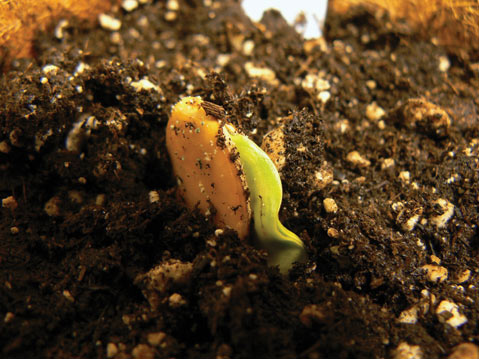Plant Inventors
Creating New Breeds of Flora

The push is on to force growers to label their plants with titles like organic, pesticide-free, or genetically modified. Especially for food-producing plants, this may be the pathway to increased health and decreased damage to the environment. The fact is that humans have been manipulating plants almost as long as they have been cultivating them. These human inventors have often had a quite-willing partner, the plant itself. Plants have been reinventing themselves for millions of years just to stay alive. Whether they were adapting to changing climate, competing with other species of the flora for nutrients and light, or evading predation by herbivorous fauna, they have come up with some amazing strategies.
The valuable essence of most herbs, both culinary and medicinal, was probably created as a toxic or at least unpalatable defense against rapacious insects, mollusks, or mammals. The size, shape, or texture of leaves (or even the lack of leaves altogether) is an indication of the environmental forces to which a plant had to adapt in its native habitat. The astonishing variety of flower shapes, colors, and scents is purely sexual in origin: all designed to attract help in carrying pollen from one posy to another. Luscious fruits of all kinds evolved from the need of a plant to disperse its seeds to favorable sites to maintain the species. It would be quite hard to really follow the new trendy paleo diet, as those plants didn’t stop evolving just as the humans that ate them didn’t either.
Humans have exploited this adaptability now for tens of thousands of years to produce food and medicine. The world of agriculture has been drastically enlarged by selecting and hybridizing a relative handful of plant species that have been multiplied into a dizzying array of varieties for all soil types and climate zones. Ornamental plants, too, have been selected and manipulated to provide a rainbow of flower and foliage colors and shapes from the lowliest groundcover to the loftiest tree.
Some of the most spectacular cultivars began as freak mutations. Take variegated foliage, for example. Leaves are usually some shade of green due to the presence of chlorophyll in the cells. Some leaves may even have several layers of tissue that contain chlorophyll. If, by some chance, a genetic anomaly occurs that blocks the production of chlorophyll in one or more of those zones, that part of the leaf is no longer green or may be a paler shade of green if it overlays another chlorophyll-containing layer. So it produces stripes or spots of white or yellow to catch the eye of the plant hunter. Dig up this plant, propagate it through cuttings, give it a fanciful name, and build a nursery business.
Other plant inventors painstakingly cross-pollinate species hoping to produce something out of the ordinary, so new and interesting that it deserves a place in every garden. The quest is never ending for bigger (or smaller), brighter (or paler), juicier, tastier flowers or fruits. In many cases, the new variety bears little resemblance to its wild ancestors. It took years to produce a pure white marigold, a yellow clivia, a 500-pound pumpkin, but human ingenuity prevailed. It’s not always about appearance, either. Much effort has been put into producing disease resistance and increased vigor (without direct manipulation of genes) by merely selecting and breeding the best of the best.



